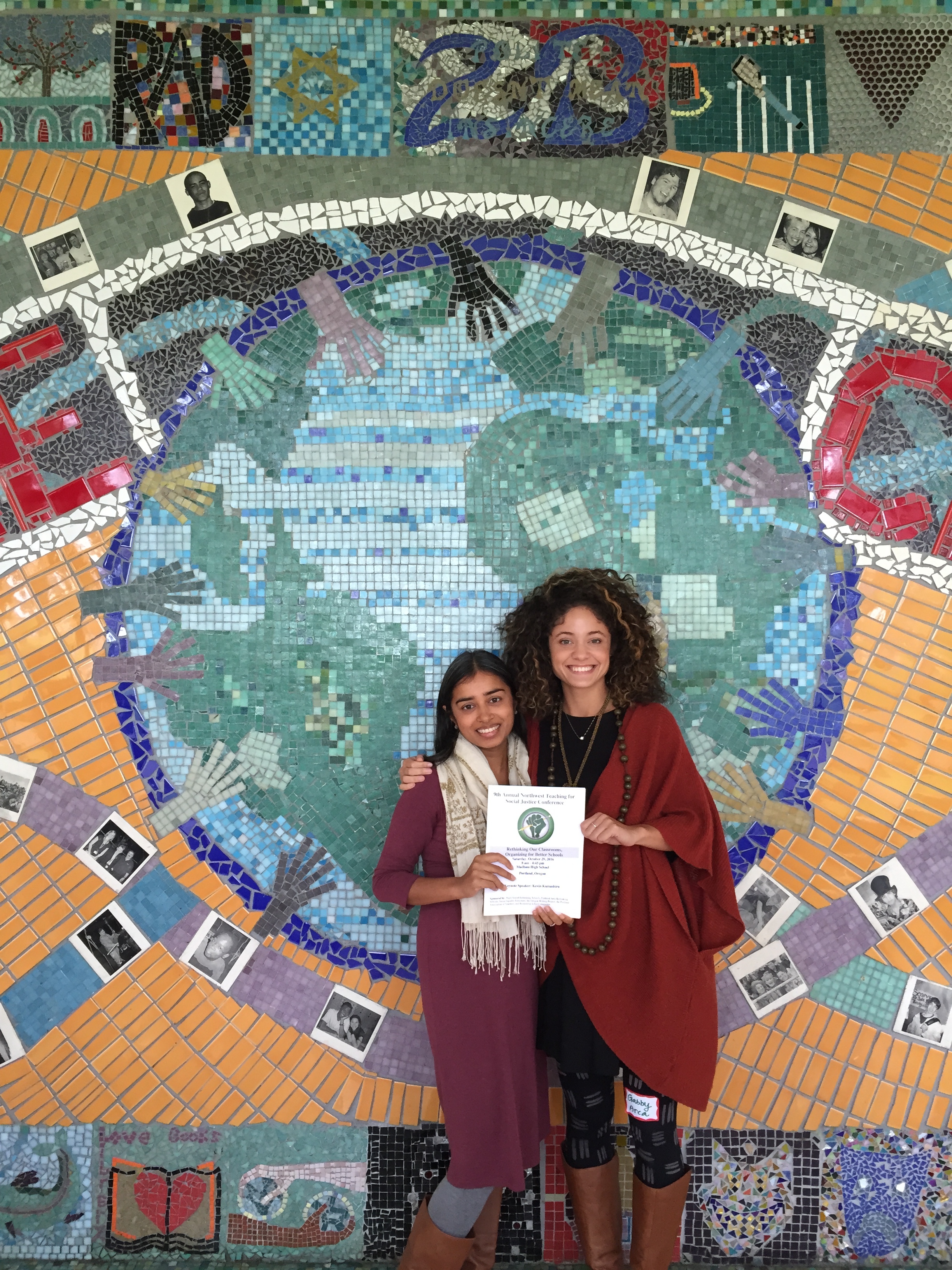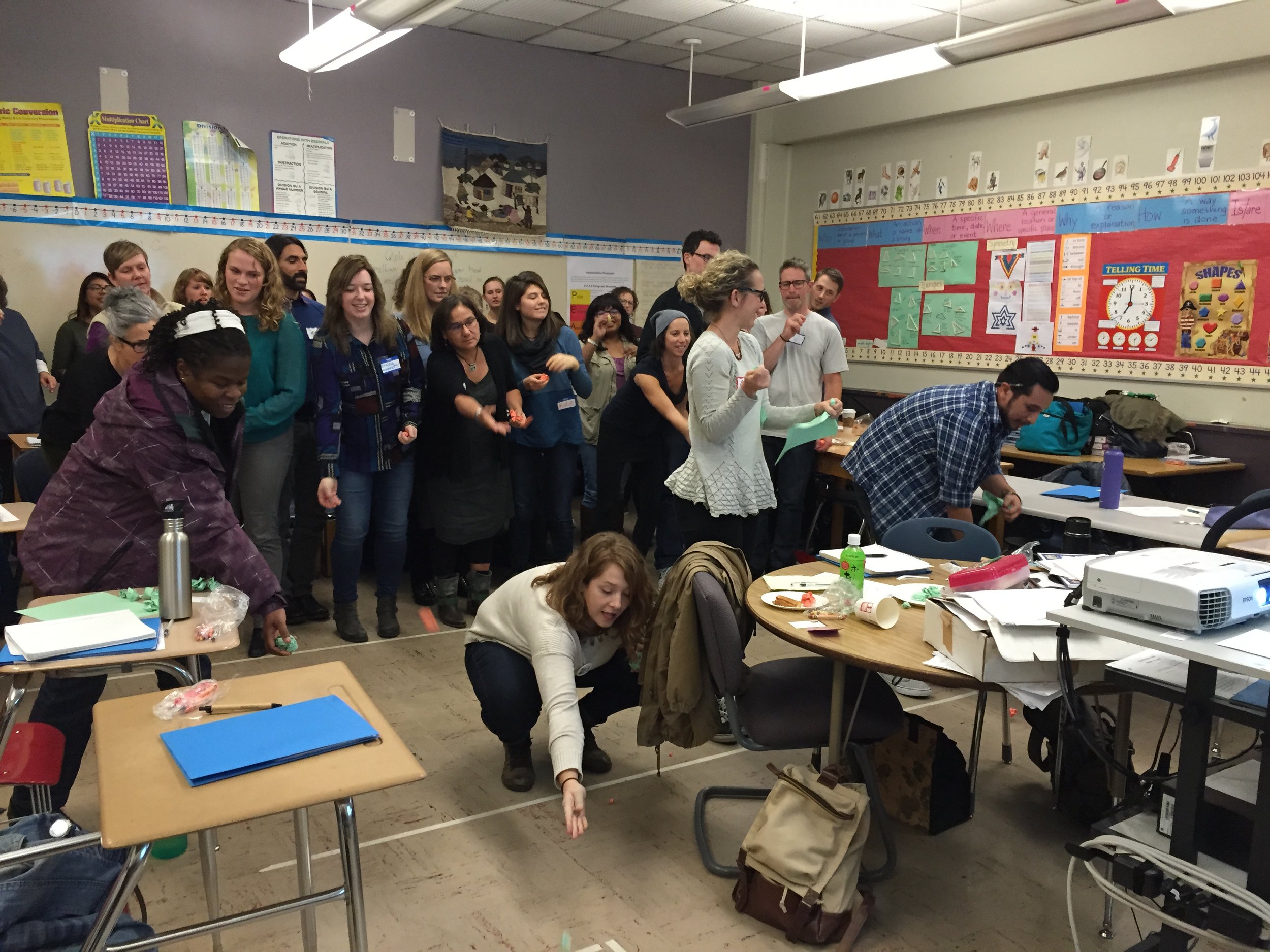Presenting at the Northwest Teaching for Social Justice Conference
We went to beautiful Portland, Oregon to present at the Northwest Teaching for Social Justice conference (NWTSJ). This conference is unique in that it is organized BY teachers and mainly run by volunteers. It was our first time in Portland and at this conference, and we were loved both (the sun even came out specially for our visit)!
The keynote speaker, Kevin Kumashiro, Dean of the University of San Francisco School of Education, reminded us that education is a social movement and the purpose of a social movement is to change the status quo and the dominant or “common sense” way of thinking. His rhetoric around “common sense” resonated with us as we often tell our students that saying something is obvious or common is NOT an argument. Historically, it was “obvious” (to those in power) for a long time that white men were superior. It also speaks to the relevance of identity and position - once you locate yourself, it’s much more clear why something that is obvious to you does not seem to be “common sense” for others.
Our workshop was entitled: Classroom simulations to confront privilege and internalized stereotypes. We love simulations and were excited to introduce two that we created to other teachers! The best way to do this, of course, was to have our workshop attendees experience the simulations themselves so they would know best how to adapt the activities for their classrooms and students.
Our first activity involved reading a description of a human and giving our attendees one minute to draw who they visualized in their mind upon hearing that description. We flew across the country with 40+ baggies of crayons so people could draw in color! Despite how unexpectedly heavy that many crayons can make a suitcase, we would do it again. People were forced to decide what skin color the person they were drawing would have instead of avoiding the issue by drawing in pencil or pen.
The reflections and discussion from this activity were fascinating. Someone asked how many people drew 3 or more women (out of 6 people total). Less than half of the room raised their hands. Many people reported trying to “fight” their impulses to immediately go to a dominant or stereotypical idea (for example, a basketball player is black and male), but were still aware of where their minds went first. This cognitive dissonance seems to be articulated more by adults as children usually just confidently forge ahead.
Next, we led participants through our beloved pompom simulation that we created to teach our students about privilege and systemic poverty and oppression. In this activity, pompoms simulate wealth and power and participants learn about and feel the effects of privilege as they go through three rounds of opportunities to earn and distribute “wealth” (pompoms). Since space was tight, we actually did Round 1 (collecting pompoms) in the hall! Attendees were given slips of paper with instructions ranging from “You can use your hands and move around in your normal fashion” to “You may only use your two pointer fingers behind your back.”
As you can see, participants jumped right in! A few people worked together, and - this was a first - one person even ended up in Group 1 (great wealth and power from many pompoms) because he said he wasn’t allowed to move his feet so everyone around him helped him! He later admitted he felt a little guilty for profiting from help to move into the exclusive Group 1 and in Round 2, helped the other two groups make “baskets” by having them pass their paper balls up so he could put them in the basket for them! He made the connection to tokenism and our conversation could have gone there for the rest of the session!
Our attendees level of helping each other and working together was something we have seen very little of when we’ve done this activity in the past (both with children and adults). One participant said she felt that she didn’t “earn” the pompoms when someone gave them to her so she felt that voting to redistribute them didn’t appeal to her as it would be less than satisfying. Members of Group 3 (least amount of pompoms) noted how quickly they felt marginalized and cast aside. One person said she immediately felt de-prioritized when I didn’t even write “Group 3” on the board, as it was just “everyone else.” Others noted how their behavior was influenced by knowing that they were at a social justice conference and not wanting to look “bad” by being too competitive! As always, it was wonderful to hear reactions and thoughts about the reflections and responses we hear from our students.
One important reminder that came out of our workshop was how fortunate we are to be teaching at an independent school where we have a lot of freedom over our curriculum and activities as well as the support of our administration. Many of our workshop participants were public school teachers with less autonomy over curriculum and teaching methods and it was inspiring to hear how they forge ahead anyway. We also received some great suggestions and ideas about how to extend our simulations and connect student experiences to learning in other ways.
We are feeling refreshed, energized, and enthusiastic about continuing this work and collaborating with other educators! Some questions we were asked that we are still pondering include:
How do we make sure that students understand these systems of oppression hurt all of us?
How can this work be done different contexts (public schools or schools less flexible curriculum mandates)?
Please share your thoughts, comments, and questions below! We want to hear from you. Let's stay connected.


